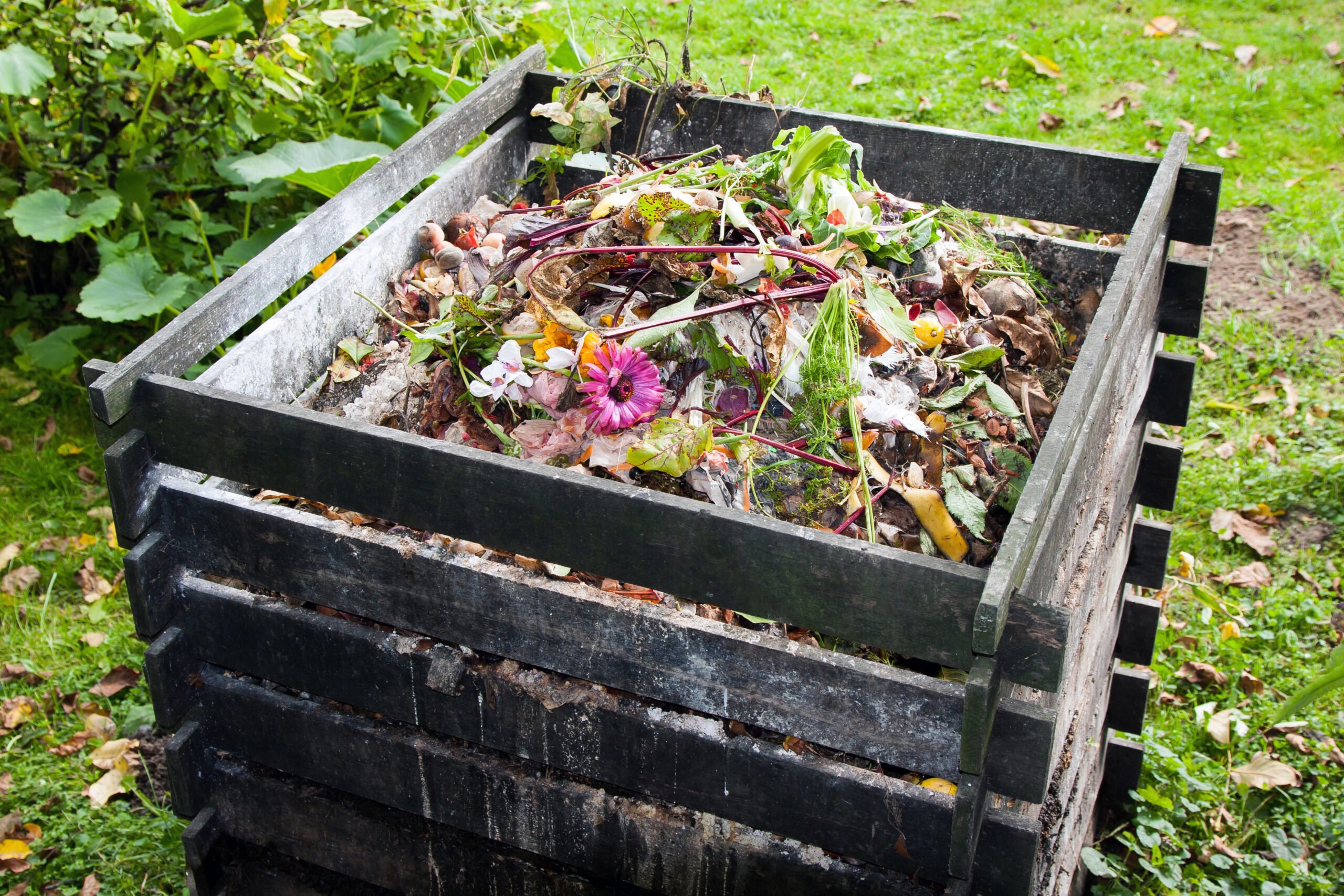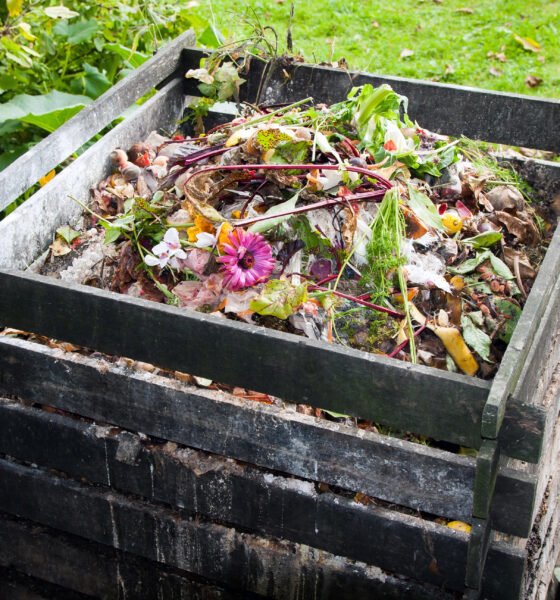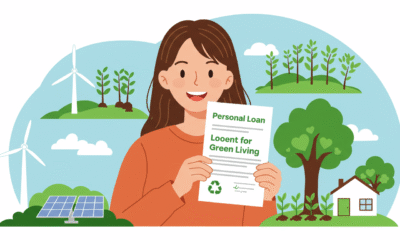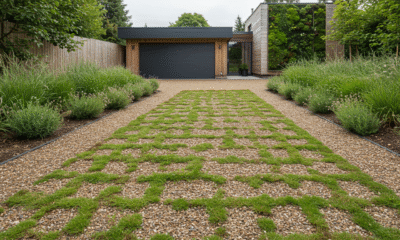One of my family members recently started growing their own food. They said that they want to be self-sufficient in case there is another major crisis that affects the supply chain such as the pandemic, but they also want to make sure that they are doing everything that they can to lower their carbon footprint.
Growing your own food can be a good way to be more eco-friendly. The International Atomic Energy Agency reports that around 30% of all global greenhouse emissions are caused by the agricultural sector. There are a lot of reasons that agriculture affects climate change but one of the biggest is the use of chemicals and fertilizers.
You can lower your carbon footprint by growing your own food, because it doesn’t need to be transported and you don’t need fertilizers. The important thing is to compost correctly.
Embracing Compostable Products for a Sustainable Future
Running parallel to the need for sustainability-friendly alternatives is a budding demand for compostable products such as cups, containers, cutlery, and bags over traditional plastic ones that continue to clutter landfills and pollute our environment.
In addition to foodstuffs, health-conscious consumers are also increasing their use of alternative and sustainable packaging products made from compostable materials for personal care.
Using compostable products as new solutions that can be biodegradable is good for the world. By adopting these eco-friendly practices, we can contribute to a better world. But it only works if they are composted, not just thrown in the trash.
In essence, this guide will answer why compostable products matter so thoroughly, from their necessity to the typical misunderstanding regarding them not going into a particular bin and how homeowners and food businesses dispose of them correctly throughout their circularity journey.
Why Compostable Products are Crucial for Environmental Sustainability
Compostable goods are made up of biobased materials such as paper, plant fibers, and other organic content that will completely decompose in the correct composting conditions.
These products are good eco-friendly replacements for non-biodegradable styrofoam products. By contrast, common plastic is not biodegradable and will take centuries to decompose in landfills.
Through the choice of compostable serving ware, packaging, bags, and other items — consumers can decrease their plastic footprint while safeguarding tons upon tons of organic waste from piling up into festering landfills.
Rise of Compostable Products in Homes and Food Businesses
Because more is being done to protect the environment, a lot of brands are stepping up and doing their bit for much less environmentally damaging serving options. Dedicated compostable cold cups are even more popular in cafes and restaurants.
You can now find corn-based biodegradable cups, plates, and utensils (among many others) in most grocery stores, cafes, and restaurants.
Home composters are also a popular trend for diverting food scraps, yard trimmings, and lignocellulosics from landfills. Nevertheless, for these items to be able to extract the most benefit in terms of sustainability, they must enter back into a compost system instead of traditional waste.
Common Misconceptions About Compostable Product Disposal
If you throw that compost bin into an obligate landfill trash heap—not realizing that most sites do not manage organic waste—then your bag of compostables sits in a sea of plastics, where it can’t do what one would naturally want done (i.e., nourish future plants).
But when it comes to making this a reality and composting your products the right way, with as little to no environmental impact as possible—proper disposal of these things is necessary if we want them to break down completely as they should.
This is with some skepticism—as many, including myself until recently, are doubtful that these products will actually break down (since they need the correct surroundings to decompose, which can only really be created in active microbial environments like commercial or home compost piles heated above a certain temperature). This guide will aim to dispel some of those myths and promote proper disposal.
Read more: How To Find Sustainable Packaging For Your Move
Understanding Compostable Products
Definition and Types of Compostable Materials
A product can be labeled as compostable when it has met a set of standards for biodegradation. Certified compostable products are important because they are made from plant-based materials and are designed to break down in composting facilities, meeting specific standards to ensure their compostability. In general, this means the item should entirely degrade in as little as 6 months under specific conditions of industrial composting according to either ASTM D6400 or EN 13432 standards.
Examples of compostable goods are derived from polylactic acid (PLA) – which in turn is made up of corn starch, paper out of a variety including wood pulp or possibly non-GMO plants), bioplastics, and bagasse fiber coming from sugarcane.
Difference Between Biodegradable and Compostable
Biodegradables, on the other hand, will be decomposed by microorganisms into carbon dioxide and water; however, if biodegradable products are not composted properly, they may break down or disintegrate but would still likely leave heavy metals behind.
For any such products to be referred to as compostable, they must meet scientific standards within the required time frame (6 months). This guarantees that they decompose fully with no hint of residue left behind.
Examples of Commonly Used Compostable Products
Such day-to-day examples as paper sandwich/deli bags and wraps, disposable cups made from PLA or bagasse, plant-based bioplastic clamshell containers and plates (cold dishware), some compostable cold drink straws at fast food chains, soup bowls provided by vending companies for fast-food restaurants in addition to home waste collection trash can liners.
By incorporating these compostable products, we can make more sustainable changes and lower plastic garbage. There are even compostable produce bags for fruit and vegetables, which you can get at many grocery stores.
Best Disposal Practices for Homeowners
Home composting setup tips
Set up a compost bin dedicated to kitchen scraps and other things, such as dirty paper plates. Combine brown materials, such as dry leaves, which are high in carbon for structure, with green sources of nitrogen, like food waste. Keep the pile turned and moist—a bit drier than an oversaturated sponge. In 6-12 months, you will have lovely compost soil!
What Can and Cannot be Composted at Home
This includes plant-based fibers, food scraps, and compostable paper plates/cups and cutlery. Stay away from meat, dairy, fats, and oils, as well as pet waste, regular plastic, or composite containers with a thin layer of plastic lining. Yard trimmings are typically okay, but consult local composting programs’ rules and regulations.
Troubleshooting Common Home Composting Issues
If the pile isn’t heating up, add more greens or turn it to aerate. Too wet? Add browns such as leaves or shredded paper. Pests like flies? Be careful to bury food scraps below other materials or use biodegradable covers. Finally, the compost should not give off a nasty odor — if it does, then an imbalance is present and needs to be rectified.
Guidelines for Food Businesses
Implementing Composting in a Business Setting
Many businesses must use commercial composting bins, which are then collected by waste handling services. Teach all staff the correct sorting of compostables and regularly clean/maintain collection areas.
Clearly label the Bins and Remove any Non-Compostable items before Pickup. New hire onboarding: One of the biggest gaps in this compost training should be among new hires.
Educating Staff and Customers on Composting Practices
Let your patrons know about the composting program with on-premise signs near bins. Ask them to peel away non-compostable cup sleeves and napkins and have a flagging system for anything that doesn’t belong. Employees are brand ambassadors—empower them to instruct customers gently if necessary. The focus is on increasing diversion rates and keeping operations clean with minimal odor.
Choosing the Right Compostable Products for Different Types of Food Businesses
When choosing from those many reputable compostable product suppliers, take the following into consideration -volume handled and usage of that item in addition to any prep/handling done for a switch back between traditional disposables if your local composter does not accept ALL commercially accepted items. Plates certified by the BPI, cups lined with PLA, and bagasse cutlery are just a good fit for cafes. Best for: Commercial-grade compostable containers that hold up under high-heat food delivery and are preferred by restaurants. Confirm the compatibility of a material with your processing sites.
Read More: How to Become an Environmentally Conscious Entrepreneur in 2024
Navigating Municipal Composting Regulations
Locate and Compromise with them at home: You will know the rules applicable to compost. Contact your municipality or your waste hauler, check in about community-wide composting programs, or leaf through material lists that are accepted as input.
How to find and follow local composting rules: Contact your municipality or waste hauler, or search online for information on community composting programs and eligible materials Lists.
Regulations vary locally, so make sure compostable products are accepted and processed properly near you. Comply with requirements for food-soiled compostables versus clean paper products.
Benefits of municipal composting programs: Communities that collect compostables curbside or at designated facilities see higher recycling and composting diversion rates.
The finished compost produced from these organic materials reenters local farms, parks, and gardens as nutrient-rich soil amendments. Unlike conventional trash disposal, it also avoids methane emissions from anaerobic decomposition in landfills.
Partnering with local waste management services: Discuss collection logistics, material guidelines, and education tools for composting support. Some programs provide branded compostable product bundles and signage to help businesses and residents participate more easily.
Joint community initiatives reinforce sustainability while keeping infrastructure costs lower through economies of scale.
Read More: 3 Ways an Outdoor Kitchen Can Make Your Home Eco-Friendly
Takeaways
- Education is Key: Still, Plenty of People Have No Idea What Compostable Even Means—or How to Dispose Of It. Public outreach is also something that needs to happen. Adequate signage and marking in commercial institutions are also possibilities to lead people.
- Processing Innovations: Compostable materials and technologies aren’t static, nor should processing methods be. If you live in a commercial composting area, the accepted items being collected are on their way up. However, at present, they are still considered too much of a work-in-progress to roll out anything that would be more or less universal. Worse, authenticated compostable items like bioplastics or bags must be processed at specialized facilities.
- Scaling Municipal Programs: The big cities are making the biggest impact on curbside compost collection and sorting. But Moses reminded the council that rural/small towns need help, too. Partnerships between the public and private sectors can be a great source of funding for new infrastructure projects and enable outreach on an unprecedented scale.
- Consistency in Standards: Confusion with certification logos or different regions/nations having different standards can slow the market and discourage consumers. Finding Consensus-based Organizations for Standards Requirements Harmonization is Key to Clarity.
- Making Compostable the Easiest Choice: By addressing new markets and cost-conscious consumers in existing markets that have had competing priorities like a hard-to-explain (and often more expensive) alternative to traditional plastics and paper products, we will see quicker adoption into the mainstream. Bundled compostable goods, point-of-sale promotions, and well-run public programs all compel processing.
- Motivating Businesses: Large businesses making zero-waste goals boost demand for compostables. Yet small businesses need more than a helping hand to divert their wasted food—they require financial incentives, waste hauler partnerships, and best practice sharing networks.
- Grassroots Push for Policies: Cities pass laws because people are moving them to action. Local environmental groups, volunteering, or attending city council meetings all help to perform intimate actions demanded by systematic change from the ground up.
Through persistence and collaboration on multiple fronts, we can make composting the cultural norm it deserves to be while creating a circular economy that cherishes unusable resources rather than discards them. Sustainability only works if the same kind of enlightened self-interest joined with a knowledgeable public making informed choices is in store.
Read More: Tips to Have a Low-Waste, Eco-Friendly Wedding
Conclusion: Making the Most of Compostable Products
Make sure the used compostable ware goes into the actual composting process, not the garbage bin stack. Complete biodegradation will occur only through a proper composter.
Respect municipalities’ or home compost piles’ material guidelines. Compost Collection Bins Will be Clearly Labeled, and All Designated Parties Will be Trained. Create a way to audit and feedback diversion rates so facilities can work overtime to increase those outcomes.
Future Outlook on Compostable Products and Waste Management
Manufacturers will continue to release new, more innovative compostables as demand increases. Better and better research keeps moving the goal line to an expanding list of materials that can be used, such as bioplastics. In the meantime, lawmakers are rolling out mandatory composting regulations with upscaling infrastructure.
Through a concerted global effort, we can move beyond outdated use-and-discard models and towards lasting, sustainable remedies that benefit all people and the planet over generations.
Commit to Proper Disposal Practices
By composting all whoa items (whose, as in things that make you go ‘whoa’) instead of merely throwing them away, readers could drastically decrease their environmental impact. The future is the result of small everyday choices. Why not commit to seeking out programs in your area?
Join us, and let’s rethink waste management using intelligent compostable solutions and the circular systems that bring them back to life.


 Environment10 months ago
Environment10 months agoAre Polymer Banknotes: an Eco-Friendly Trend or a Groundswell?

 Environment12 months ago
Environment12 months agoEco-Friendly Home Improvements: Top 7 Upgrades for 2025

 Features9 months ago
Features9 months agoEco-Friendly Cryptocurrencies: Sustainable Investment Choices

 Features11 months ago
Features11 months agoEco-Friendly Crypto Traders Must Find the Right Exchange






























